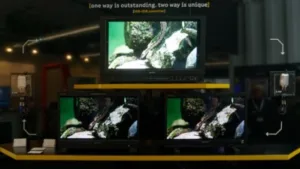We kept our visit to the Future Zone until the end of one of our last days at the show as a reward for slogging around the rest of the show!
Of course, NHK was once again showing its developments in 8K which is now due to start on December 1st in Japan. Most of the developments this year seemed to be in production and capture and one of the demonstrations was of a 240Hz high speed camera and server that can support slow motion video capture and replay. NHK was not keen on us taking pictures of content, but it did look good, although, as we all know, you have to be close to the display to get the most from it. Unlike last year, there was no demo of very large displays based on OLED. NHK had an 8K STB that has been developed by Sharp.
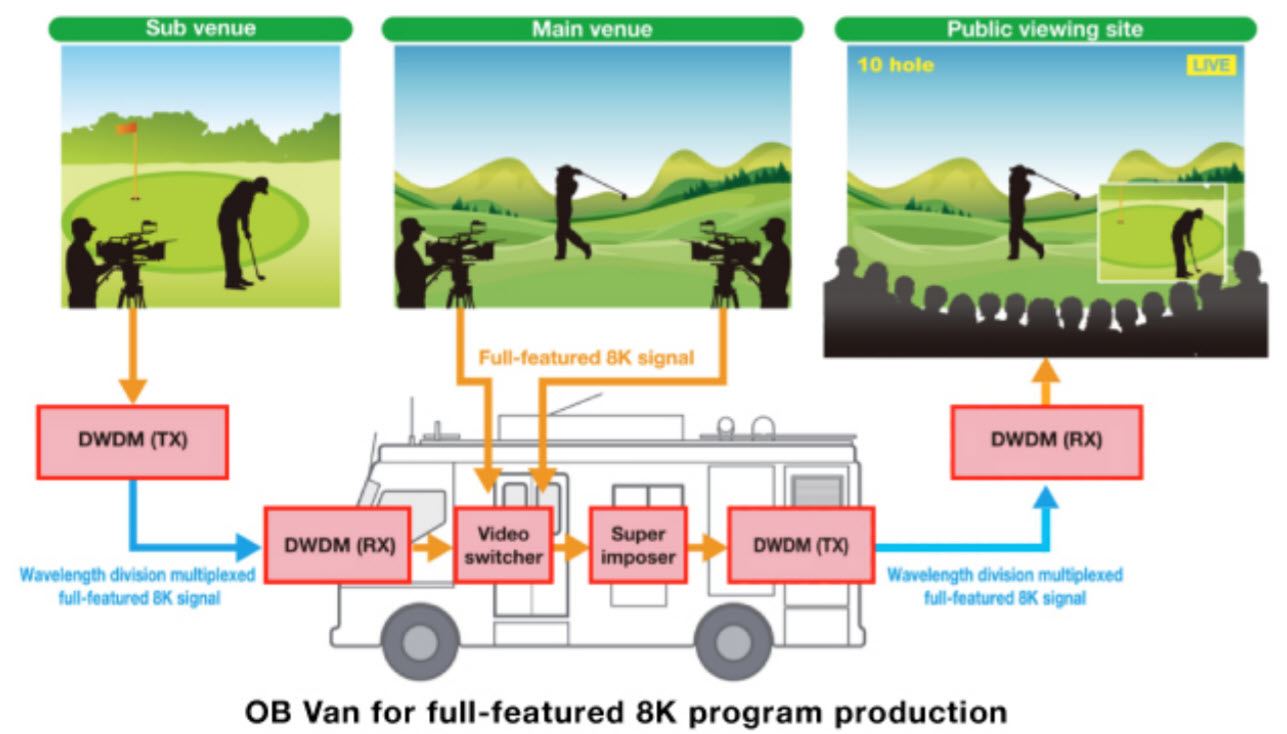 NHK has been working on the content production system and workflow for 8K
NHK has been working on the content production system and workflow for 8K
NHK had the 88″ OLED panel from LG Display that was also used in the TV shown at IFA by LG Electronics.
NHK also had a demonstration of the use of AI for artificially and automatically colouring monochrome content. The process uses an estimation neural network that applies colours and a separate correction neural network that corrects the process. Finally, the data from these two processes are applied to the original content by a third network. Colorised videos are available at http://www.nhk.or.jp/special/plus
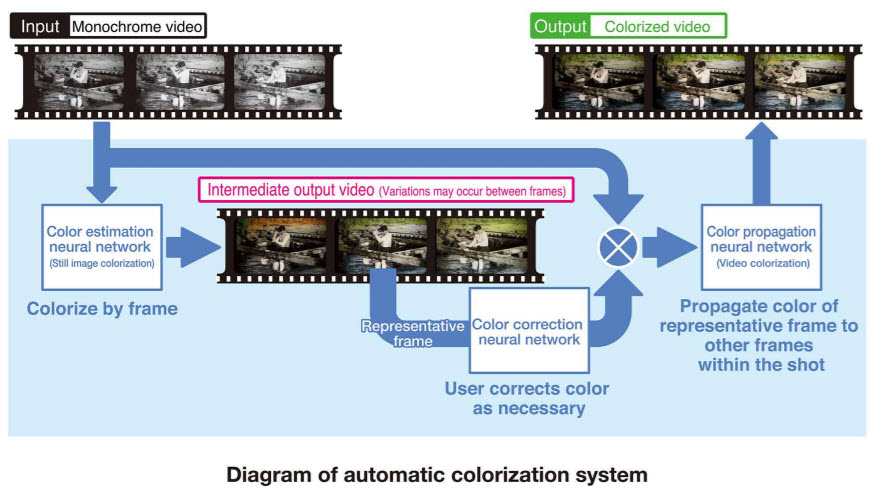
NTT Docomo has developed a spherical LED display that is built around a drone so that the display can be put into any space. There is a video taken by analyst, Ben Keen, on his twitter feed. Allowing a longer exposure time (as we have in our image) gives a better sense of how solid the display can look.
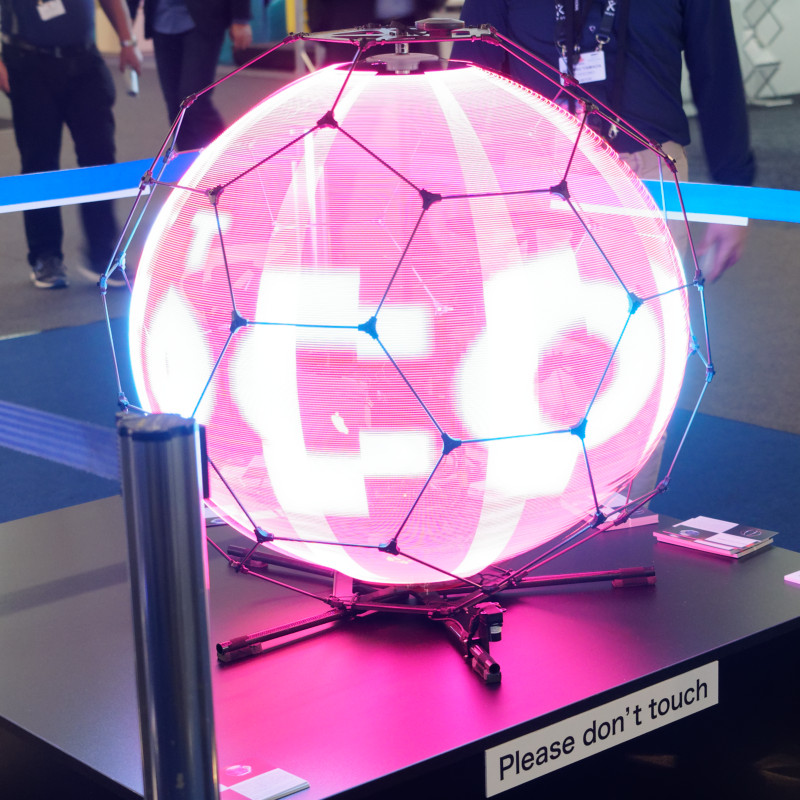
Prof. Alan Chalmers is from the University of Warwick and has regularly appeared in the Future Zone to talk about HDR as he has an HDR schema that is said to be better at dealing with extremely high brightness, as he is concerned that the PQ curve that Dolby developed runs out of room at 10,000 cd/m². In the past (2016), Chalmers has shown very bright HDR displays. He also feels that although PQ was based on a reasonable scientific method, the sample population was both small and limited, when the work on sensitivity was originally done by Peter Barten (and that was used in developing PQ). (Want a Bright Display? How About 10K candelas?). Chalmers is still promoting his concept of using a Power Transfer Function (PTF) which, it claims, is faster to encode and decode than PQ. It is also open and royalty free and he sees an opportunity with the arrival of AV1 which is also royalty free.
The BBC was talking in the Future Zone about its tests with HLG. Some of the tests have involved cameras with dual output in HD with SDR and UltraHD with HDR and the organisation has found that the same capture can feed both. The BBC has been testing the provision of content from the Winter Olympics and World Cup over IP and said that it has had 60 to 80 thousand viewers with broadband of up to 40 Mbps. Both video and audio quality was considered good by viewers, but the long delays were considered a problem because in a household there might be a range of devices receiving content with different levels of delay. The BBC is looking at the possibility of developing multicast – i.e. sending the same IP stream to multiple receivers. This would reduce the network equipment needed, but would mean a need for router add-ons.
B<>Com of France was showing its HDR to SDR tone mapping – building on last year’s conversion the other way. The research organisation told us that the conversion is dynamic on a frame by frame basis with real time conversion with just a two line delay. As well as dedicated hardware, the tone mapping can run on a CPU.
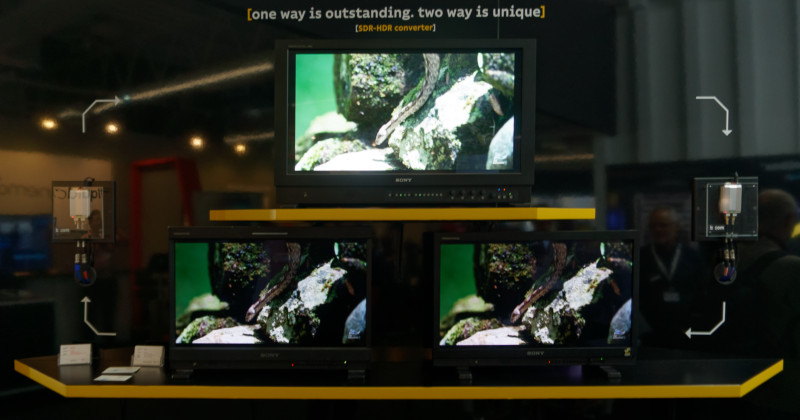 B<>Com showed HDR to SDR conversion after showing SDR to HDR last year. Image:Meko
B<>Com showed HDR to SDR conversion after showing SDR to HDR last year. Image:Meko

